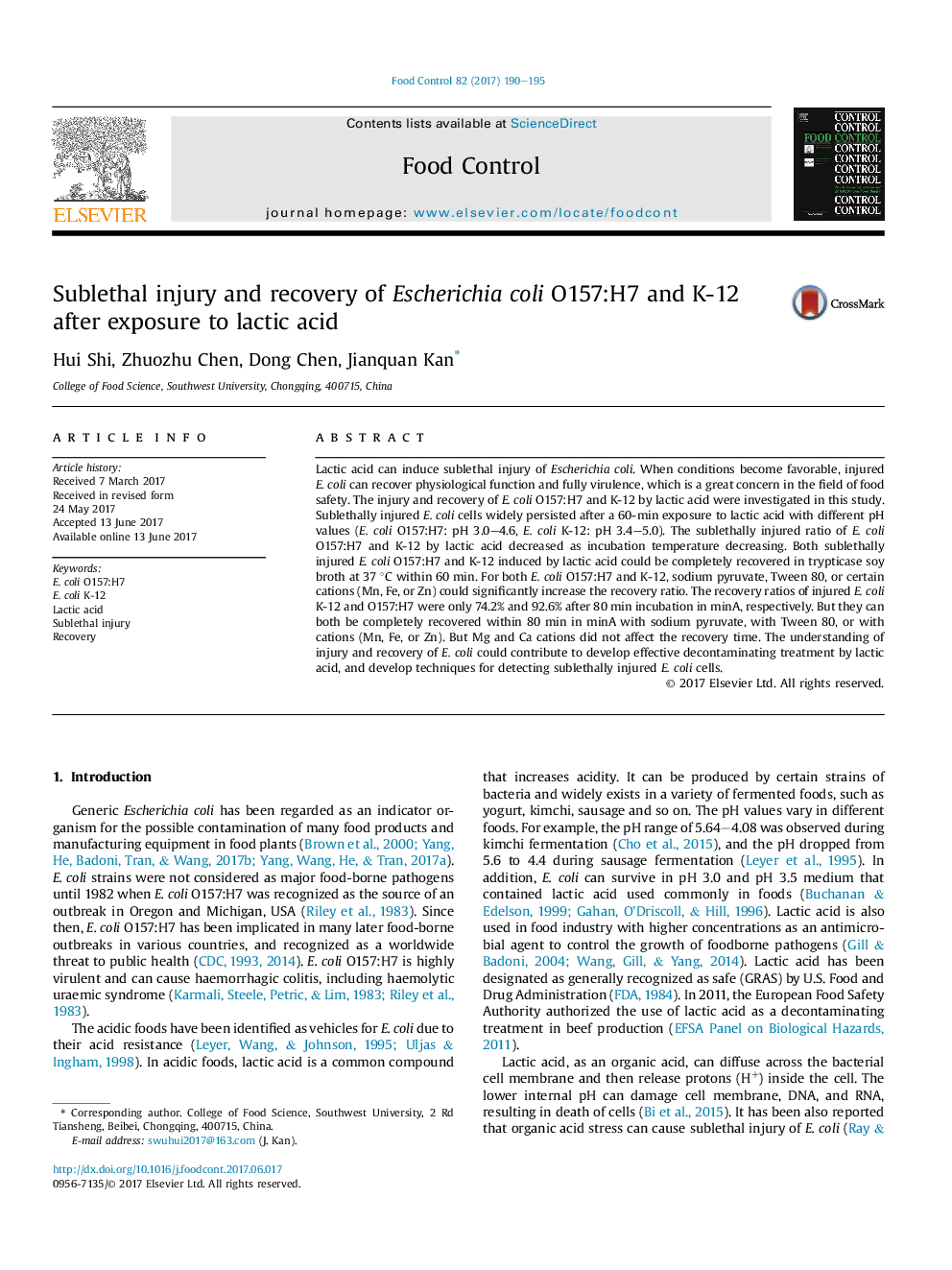| کد مقاله | کد نشریه | سال انتشار | مقاله انگلیسی | نسخه تمام متن |
|---|---|---|---|---|
| 5767149 | 1628382 | 2017 | 6 صفحه PDF | دانلود رایگان |

- Sublethally injured E. coli O157:H7 and K-12 widely existed after exposure to lactic acid with different pH values.
- An antagonistic effect was observed for the combination of lactic acid and cold stress.
- Mn, Fe, and Zn cations increased the recovery ratio of both E. coli O157:H7 and K-12.
Lactic acid can induce sublethal injury of Escherichia coli. When conditions become favorable, injured E. coli can recover physiological function and fully virulence, which is a great concern in the field of food safety. The injury and recovery of E. coli O157:H7 and K-12 by lactic acid were investigated in this study. Sublethally injured E. coli cells widely persisted after a 60-min exposure to lactic acid with different pH values (E. coli O157:H7: pH 3.0-4.6, E. coli K-12: pH 3.4-5.0). The sublethally injured ratio of E. coli O157:H7 and K-12 by lactic acid decreased as incubation temperature decreasing. Both sublethally injured E. coli O157:H7 and K-12 induced by lactic acid could be completely recovered in trypticase soy broth at 37 °C within 60 min. For both E. coli O157:H7 and K-12, sodium pyruvate, Tween 80, or certain cations (Mn, Fe, or Zn) could significantly increase the recovery ratio. The recovery ratios of injured E. coli K-12 and O157:H7 were only 74.2% and 92.6% after 80 min incubation in minA, respectively. But they can both be completely recovered within 80 min in minA with sodium pyruvate, with Tween 80, or with cations (Mn, Fe, or Zn). But Mg and Ca cations did not affect the recovery time. The understanding of injury and recovery of E. coli could contribute to develop effective decontaminating treatment by lactic acid, and develop techniques for detecting sublethally injured E. coli cells.
Journal: Food Control - Volume 82, December 2017, Pages 190-195